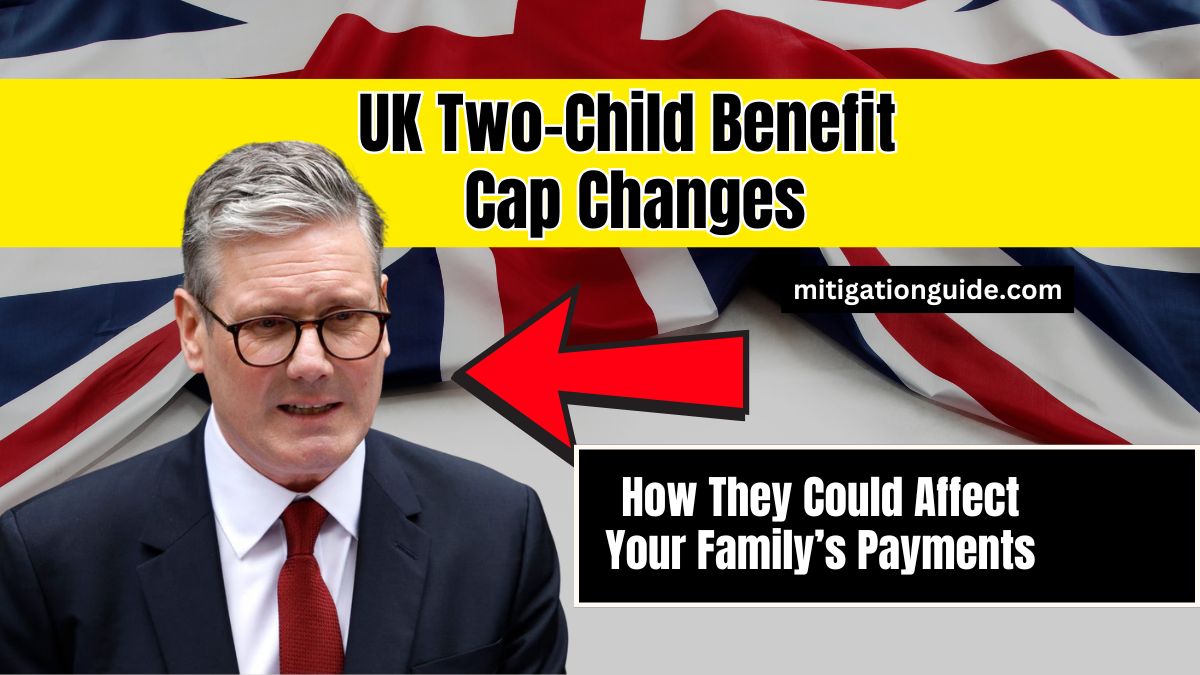The UK Two-Child Benefit Cap, implemented in 2017, has sparked considerable debate due to its significant impact on families, especially those with multiple children.
As we approach 2025, the policy is under review, with the government exploring potential changes that could provide relief to struggling households.
This guide delves into the background, current discussions, and potential reforms to the cap, offering insights for parents, policymakers, and concerned citizens.
Understanding the Two-Child Benefit Cap
Introduced in April 2017, the Two-Child Benefit Cap limits the number of children for whom families can claim means-tested benefits such as Universal Credit and Child Tax Credit.
Families are only eligible to receive financial support for the first two children, unless they qualify for specific exemptions.
This has directly impacted families, particularly those with three or more children, causing financial hardship and contributing to rising child poverty rates.
Exemptions to the Two-Child Cap
While the general rule is to limit benefits to two children, certain circumstances provide exceptions. These exemptions include:
- Multiple births (twins, triplets, etc.)
- Adoption
- Kinship care (children cared for by family members other than parents)
- Non-consensual conception (where a child is conceived as a result of rape or incest)
If your third child was born after April 6, 2017, and none of the above exemptions apply, you likely won’t receive additional financial support for them.
The Real-World Impact of the Two-Child Benefit Cap
The Institute for Fiscal Studies (IFS) has highlighted the far-reaching effects of this policy, particularly on families with three or more children.
Approximately 450,000 families have lost out on an average of £3,455 per child annually. This reduction in support has been a significant contributor to the rise in child poverty.
A 2024 report by the Fabian Society revealed:
- 1.2 million children under five live in households earning below 60% of median income (after housing costs).
- Almost half of these children are in deep poverty, living on less than 40% of median income.
These statistics underscore the severe financial strain placed on some of the most vulnerable families in the UK due to the two-child policy.
Proposed Changes to the UK Two-Child Benefit Cap
The UK government is currently reviewing the Two-Child Benefit Cap and is considering several changes aimed at easing the burden on families without entirely eliminating the cap. Here are the key proposed changes:
1. Exempting Children Under Five
One proposed reform is to lift the cap for children under the age of five. This would provide financial support during the critical early developmental years.
2. Exempting Disabled Children
Another potential change is to allow families caring for a disabled child to claim support for more than two children, acknowledging the higher financial costs associated with raising a disabled child.
3. Supporting Working Parents
Families where both parents are employed may qualify for expanded support, encouraging work while reducing dependency on welfare.
4. Increasing Payments for Babies and Toddlers
Increasing Universal Credit payments for children aged 0–3 could provide targeted help for families with young children, without fully lifting the cap.
5. Introducing a “Child Benefit Lock”
This reform would ensure that child benefit rises annually in line with inflation or earnings, preventing the value of payments from eroding over time.
While some discussions have considered a move to a three-child limit, this idea is not currently under serious consideration.
Why Isn’t the Cap Being Scrapped?
Fully abolishing the two-child limit would come at an estimated cost of £3.6 billion per year, which is not deemed fiscally feasible by the government.
Chancellor Rachel Reeves has acknowledged the policy’s negative consequences but has emphasized the need for fiscal responsibility.
The government’s approach seeks to balance economic constraints with efforts to reduce child poverty, particularly for the youngest children.
Scotland’s Plan to Abolish the Cap
The Scottish Government has pledged to remove the Two-Child Benefit Cap by 2026, aiming to lift around 15,000 children out of poverty.
This bold move sets Scotland apart from the rest of the UK and places additional pressure on Westminster to follow suit.
Scotland’s Plan Includes
- Complete removal of the cap in devolved areas.
- Strengthened social safety nets for low-income families in Scotland.
What Can Affected Families Do Now?
If you are impacted by the Two-Child Benefit Cap, here are a few steps you can take to ensure you are receiving all the support available:
1. Check for Exemptions
Make sure you are not eligible for an exemption based on:
- Adoption or kinship care
- Non-consensual conception
- Multiple births
2. Use a Benefits Calculator
Tools like Turn2Us and EntitledTo can help you determine if you qualify for additional support, such as housing benefit, council tax relief, or free school meals.
3. Consult a Welfare Advisor
Reach out to organizations like Citizens Advice or your local council for guidance on the application or appeals process.
4. Stay Informed
Keep up with government announcements regarding potential policy changes, which may offer new opportunities for support.
The UK Two-Child Benefit Cap remains a contentious issue, but with potential reforms on the horizon, families affected by the policy may see relief in the near future.
Understanding the current policy, possible changes, and the available support options can help you make informed decisions and ensure you’re receiving all the assistance you’re entitled to.
FAQs
Who is eligible for exemptions under the Two-Child Benefit Cap?
Exemptions include multiple births, adoption, kinship care, and cases of non-consensual conception.
How much financial support can a family lose due to the Two-Child Benefit Cap?
Families with three or more children may lose up to £3,455 per additional child annually.
Are there any proposals to change the Two-Child Benefit Cap?
Yes, proposals include exempting children under five, disabled children, working parents, and boosting payments for babies and toddlers.
Why is the Two-Child Benefit Cap not being fully removed?
Removing the cap entirely would cost the government an estimated £3.6 billion annually, which is considered financially unfeasible.
